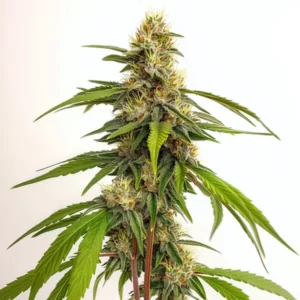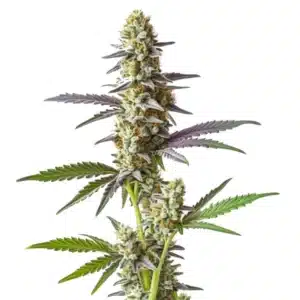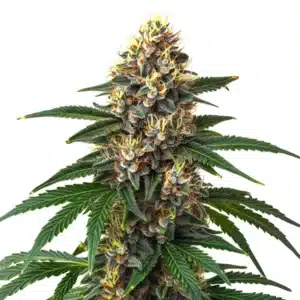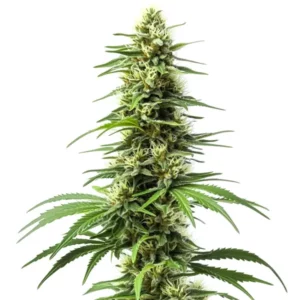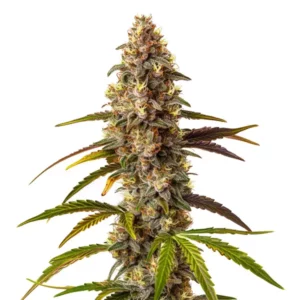
How Photoreceptors Work with Plant Hormones
Plants are amazing organisms capable of converting sunlight into energy. This magic happens through a process called photosynthesis. But there’s more to it than just sunlight. How Photoreceptors Work with Plant Hormones explains the crucial interaction that guides growth, flowering, and plant responses, making light a true regulator of cannabis development.
Photoreceptors are proteins in plant cells that detect light. They help plants sense different light conditions and trigger responses that affect growth. These responses are often mediated by plant hormones, which act as chemical messengers inside the plant.
Recommended Strains
Purple Kush
|
|
THC | 17% - 27% (Medium) |
|
|
Type | Feminized |
|
|
Yield | Medium |
|
|
Phenotype | 30% Indica / 70% Sativa |
Sour Diesel
|
|
THC | 22% - 25% (Medium) |
|
|
Type | Feminized |
|
|
Yield | High |
|
|
Phenotype | 30% Indica / 70% Sativa |
By influencing plant hormone signaling, photoreceptors regulate many aspects of plant development. They determine how a plant grows, when it flowers, and how it responds to stress. Let’s dive into how photoreceptors work with plant hormones to shape the life of a plant.
Photoreceptor Types and Their Functions
Plants have several types of photoreceptors, each sensitive to different wavelengths of light. The most common types include phytochromes, cryptochromes, and phototropins. Each has a unique role in plant growth and development.
Phytochromes are sensitive to red and far-red light. They help plants detect light quality and quantity. Cryptochromes respond to blue and ultraviolet light, while phototropins control the plant’s ability to grow towards light, a process known as phototropism.
Knowing the types of photoreceptors and their functions is essential for grasping how photoreceptors influence plant hormone signaling. Each photoreceptor type contributes to a complex network that guides plant responses to their environment, ensuring they grow robustly and effectively.
The interaction of photoreceptors and plant hormones in growth is crucial for adapting to varying light conditions. These interactions ensure that plants make the best use of available light, optimizing their growth and reproductive success.
Phytochromes and Plant Hormones
Phytochromes are vital in regulating plant hormones like auxin, which affects cell elongation. When phytochromes absorb light, they change shape and activate signaling pathways that influence plant hormone activity.
Take the cannabis strain Purple Kush from Blimburn Seeds. Its impressive growth is partly due to the efficient interaction of phytochromes and auxin. This interaction ensures optimal light absorption, leading to robust growth.
The role of photoreceptors in plant hormone regulation becomes evident when considering how phytochromes modulate hormone levels. By adjusting hormone concentrations, phytochromes allow plants to adapt their growth patterns to changing light environments.
This regulation is essential not only for maintaining structural integrity but also for optimizing photosynthetic efficiency. By knowing how photoreceptors work with plant hormones, growers can manipulate light conditions to enhance plant health and yield.
Cryptochromes and Hormonal Responses
Cryptochromes play a key role in regulating circadian rhythms and flowering time. They interact with plant hormones like gibberellins, which are crucial for flowering and seed germination.
The strain Blue Dream from Blimburn Seeds is known for its balanced growth and flowering time. This balance is achieved through the interaction of cryptochromes with gibberellins, ensuring timely flowering.
Through the effects of light on plant hormones via cryptochromes, plants can fine-tune their growth in response to daily and seasonal changes. This ability to adapt ensures that plants can thrive in diverse environments and maximize their reproductive success.
Knowing the interaction of photoreceptors and plant hormones in growth helps cultivate plants that are not only more resilient but also more productive. By leveraging this knowledge, growers can fine-tune environmental conditions to suit specific plant needs.
Promos & Deals
Phototropins and Growth Regulation
Phototropins are essential for phototropism, allowing plants to grow toward light. They work by affecting auxin distribution within the plant, which influences cell expansion and direction of growth.
For example, the strain Sour Diesel from Blimburn Seeds exhibits strong phototropic growth. Its ability to grow towards light efficiently is partly due to the action of phototropins and auxin.
Photoreceptor-mediated plant hormone responses are crucial for directing growth where it is most needed. By redistributing auxin, phototropins ensure that plants grow towards light, maximizing photosynthetic capacity and energy capture.
This targeted growth response is a perfect example of how photoreceptors work with plant hormones to optimize plant development, ensuring that resources are used efficiently and effectively.

Auxin and Phototropic Responses
Auxin is a plant hormone that promotes cell elongation. When phototropins detect light, they cause auxin to redistribute in the plant, leading to bending toward the light source.
This response is crucial for maximizing light capture, which is vital for photosynthesis. It illustrates the effects of light on plant hormones through photoreceptors, enhancing growth efficiency.
By knowing how photoreceptors influence plant hormone signaling, growers can manipulate light conditions to direct growth in desired directions. This manipulation can lead to improved plant architecture and increased productivity.
Plants like Sour Diesel benefit from this mechanism, as it ensures optimal light exposure, leading to higher yields and healthier plants. Through strategic light management, growers can enhance the interaction of photoreceptors and plant hormones in growth.
Environmental Influence on Photoreceptor Activity
Light conditions greatly influence the activity of photoreceptors and, consequently, plant hormone responses. Changes in light quality, duration, and intensity can alter photoreceptor activity.
For growers, knowing these effects is vital. Adjusting light conditions can optimize photoreceptor-mediated plant hormone responses, leading to better growth outcomes.
The role of photoreceptors in plant hormone regulation becomes increasingly important in controlled environments. By managing light spectra and durations, growers can tailor growth conditions to meet specific plant needs, enhancing overall productivity.
Innovative lighting solutions, such as programmable LEDs, offer growers the ability to simulate natural light cycles, further enhancing the effects of light on plant hormones through photoreceptors. This technology paves the way for more precise cultivation techniques.

FAQs
How do photoreceptors influence plant hormone signaling?
Photoreceptors affect hormone signaling by detecting light and activating pathways that regulate hormone levels. This process determines how plants grow, develop, and respond to environmental changes.
For instance, phytochromes can activate pathways that increase or decrease hormone levels like auxin, affecting cell elongation and plant structure. This influence is crucial for plant adaptation and survival.
The interaction of photoreceptors and plant hormones in growth is a dynamic process that allows plants to respond flexibly to their environments. This adaptability is key to thriving in variable light conditions.
By studying how photoreceptors work with plant hormones, researchers and growers can unlock new strategies for enhancing plant resilience and productivity, ensuring sustainable agricultural practices.
What are the effects of light on plant hormones through photoreceptors?
Light affects plant hormones by altering photoreceptor activity, which in turn changes hormone signaling. Different light conditions can lead to varied responses in plant growth and development.
For example, increased light intensity can enhance auxin activity, promoting cell elongation and growth. Knowing these effects can help growers optimize light conditions for better plant health.
By leveraging knowledge of how photoreceptors influence plant hormone signaling, growers can craft environments that support optimal growth and yield. This understanding is central to modern horticultural and agricultural practices.
Harnessing the effects of light on plant hormones through photoreceptors allows for more efficient resource use, supporting the sustainable cultivation of both food and ornamental plants.
How do photoreceptors and plant hormones interact in growth?
Photoreceptors and plant hormones interact by coordinating growth responses to light. This interaction ensures plants grow efficiently and adapt to their environment.
Hormones like auxin and gibberellins are regulated by photoreceptor activity, affecting cell division and elongation. This coordination is essential for healthy plant growth and high yields.
By knowing the interaction of photoreceptors and plant hormones in growth, we gain insights into the complex mechanisms that drive plant development. These insights are critical for advancing agricultural technologies.
Through selective breeding and genetic engineering, scientists work to enhance these natural interactions, creating plant varieties that are more resistant to stress and capable of higher productivity.
What is the role of photoreceptors in plant hormone regulation?
Photoreceptors regulate plant hormones by sensing light and triggering changes in hormone levels. This regulation controls growth patterns, flowering times, and stress responses.
Through this regulation, plants can optimize their growth and adapt to changing environmental conditions, ensuring survival and reproductive success.
The role of photoreceptors in plant hormone regulation is a cornerstone of plant adaptive strategies. By modulating hormone levels, photoreceptors enable plants to make the most of their surroundings.
Knowing how photoreceptors work with plant hormones allows for the development of innovative agricultural practices, leading to crops that are both more productive and more sustainable.
How can growers use knowledge of photoreceptors and hormones for better yields?
Growers can use knowledge of photoreceptors and hormones to adjust light conditions, optimizing plant growth and yields. By knowing the interaction between light and hormones, growers can improve cultivation practices.
For instance, using adjustable LED lights can simulate natural light conditions, enhancing photoreceptor activity and hormone responses, leading to healthier plants and higher yields.
By mastering the effects of light on plant hormones through photoreceptors, growers can create ideal conditions for plant growth, maximizing both quality and quantity of yield.
As our knowing of how photoreceptors influence plant hormone signaling deepens, new technologies and methods are emerging that promise to revolutionize how we grow our food and ornamental plants.




